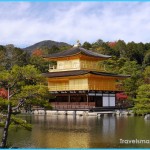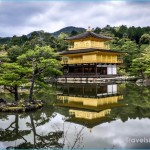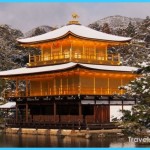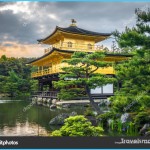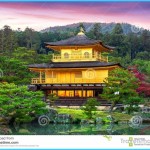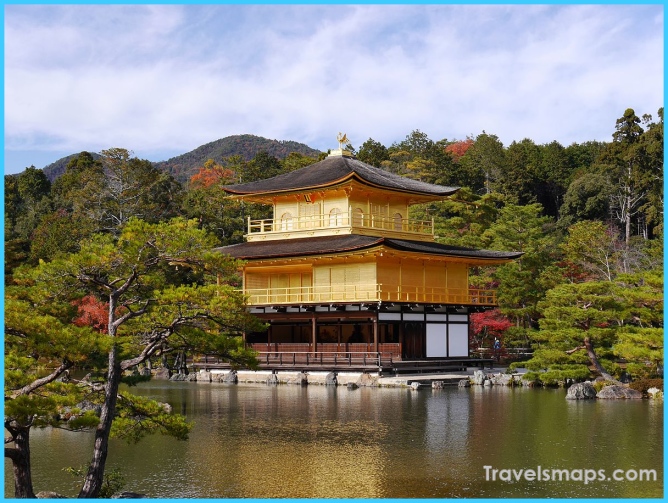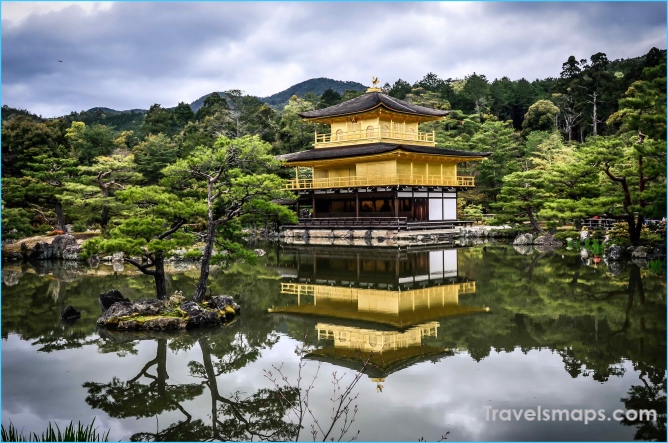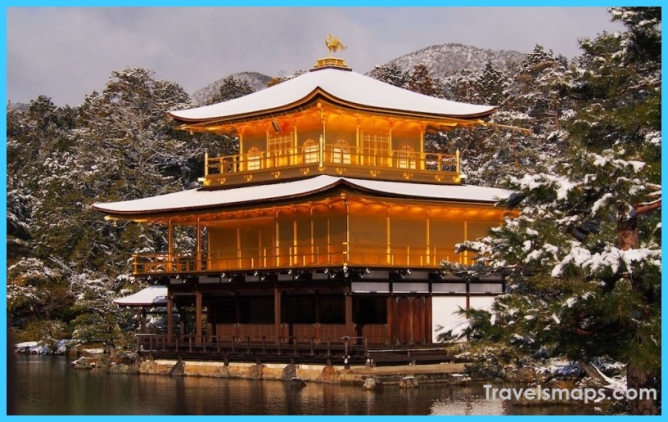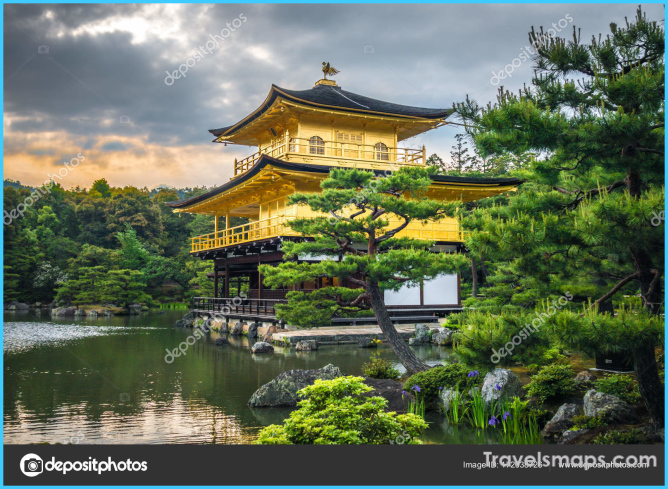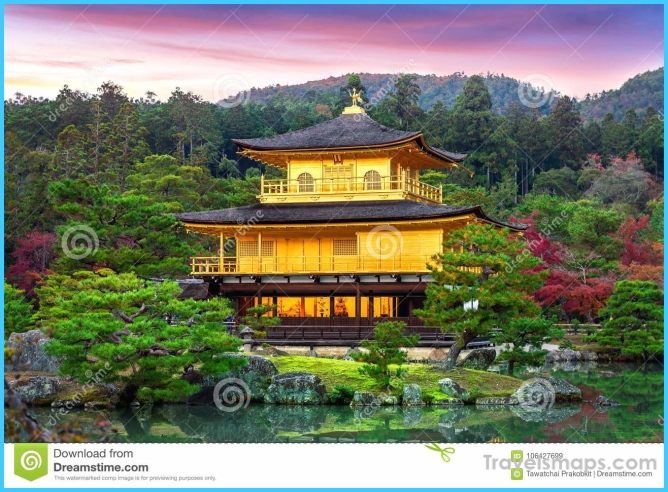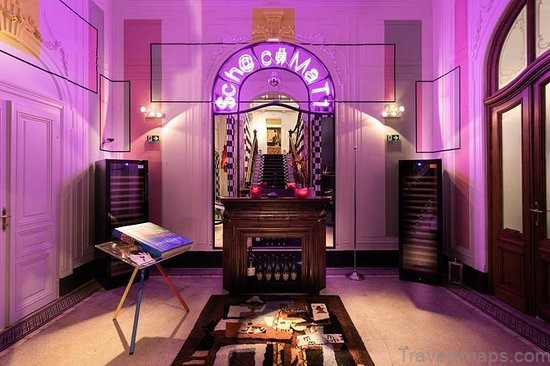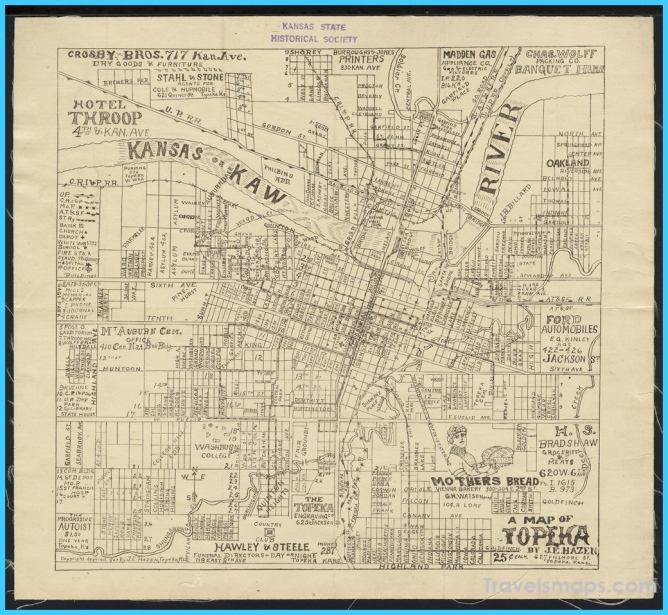Kinkaku-ji, renowned for its Golden Pavilion, was originally an aristocrat’s estate that was expanded by Shogun Yoshimitsu Ashikaga as a retirement villa in 1397. Converted into a Zen Buddhist temple after his death, Kinkaku-ji is now a World Heritage Site and perhaps Kyoto’s most famous landmark. Increasingly large numbers of admirers trooping through the temple’s traditional gate can resemble a theme park entrance at times, but once inside the spacious earthen-walled compound, Kinkaku-ji’s extensive and beautifully landscaped gardens do offer room to breathe. Mount Kinugasa provides an expansive natural backdrop of classic shakkei “borrowed scenery,” enhancing the sense of spaciousness.
Kinkaku-ji Temple in Kyoto Photo Gallery
The upper two stories of the Golden Pavilion, a storehouse for sacred relics, are covered with pure gold leaf. The elegant structure reflecting in Kyokochi Pond is a glowing wonder in afternoon sunlight, like molten gold mixed with the mesmerizing colors of a campfire. Drawing steady streams of visitors even under drab or rainy skies, a rare snowfall accentuates the pavilion’s smoldering incandescence enough to cause a photographic frenzy at Kinkaku-ji. The temple’s chronology is also attracting growing attention after the recent excavation of a gilt bronze fragment near Kinkaku-ji’s tour bus parking lot. Archeologists hope the discovery may prove the existence of the shogun’s legendary pagoda, Kitayamaoto, hypothesized to have towered over 328 feet (100 meters) as the tallest wooden structure in Japan’s history.
Snow on the Golden Pavilion is a rare pictorial blessing.
The upper stories of the Golden Pavilion are richly gilded with gold leaf.
“It’s me at Kinkaku-ji!”
Sacred Ryumon Waterfall splashes upon Carp Rock.
An idyllic pine island in Kyokochi Pond.
A pair of graceful flying cormorants complete a winter composition.
A patient gray heron fishes from an islet in Mirror Pond.
Maybe You Like Them Too
- The Best Places To Visit In North America For Christmas
- Faro Travel Guide: Map of Faro
- Mumbai Travel Guide For Tourists: Map Of Mumbai
- Travel to Budapest
- Thailand Travel Guide for Tourists: The Ultimate Thailand Map

